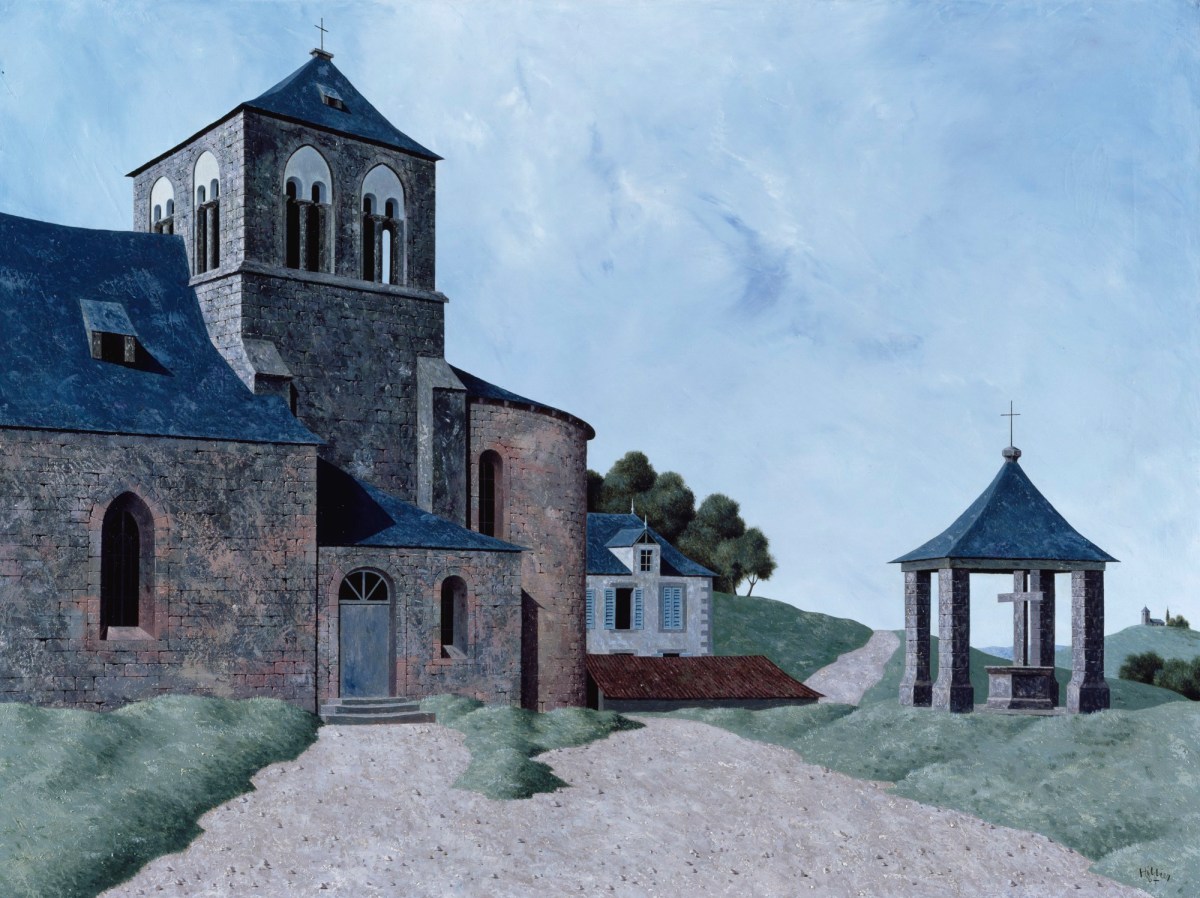
Tristram Hillier RA, Ligneyrac, Corrèze, 1964.
Oil on canvas. 610 mm x 815 mm. © Royal Academy of Arts. © Photo: Royal Academy of Arts, London. Photographer: John Hammond.
This image is not available to download. To licence this image for commercial purposes, contact our Picture Library at picturelibrary@royalacademy.org.uk
Ligneyrac, Corrèze, 1964
Tristram Hillier RA (1905 - 1983)
RA Collection: Art
Following his election as a Royal Academician in 1967, Tristram Hillier presented this painting of three years earlier as his Diploma Work. Depicting the church and cross at Ligneyrac, a small village in the department of Corrèze in central France, it typifies his elegant and sharply-defined style of painting. It is an everyday scene but seems, at the same time, to have an unreal intensity. For the artist, churches held great resonance: he was a committed Roman Catholic and painted images of the lives of the saints and the Passion of Christ as well as still-lifes of bread and wine, alluding to the Eucharist. However, the majority of his paintings are marine scenes and landscapes. Their success lay in his ability to imbue the commonplace with a heightened significance.
Hillier was born in Peking, where his Father was manager of the Hongkong and Shanghai Bank. He abandoned his study of economics at Christ's College, Cambridge and a short-lived apprenticeship with a firm of chartered accountants to enroll at the Slade School of Fine Art in 1926. Moving to France in 1927, Hillier met many of the leading abstract painters of the day. Through his membership of the avant-garde Unit One Group in the 1930s he developed close links to the English Surrealist movement, befriending in particular Edward Wadsworth. After the Second World War the artist settled in rural Somerset and for the rest of his career worked in a more representational style. However, he liked to spend part of each year in France, Spain or Portugal, and the early influence of de Chirico lingers in the mysterious stillness of the un-peopled architectural landscapes his travels inspired.
Object details
610 mm x 815 mm




